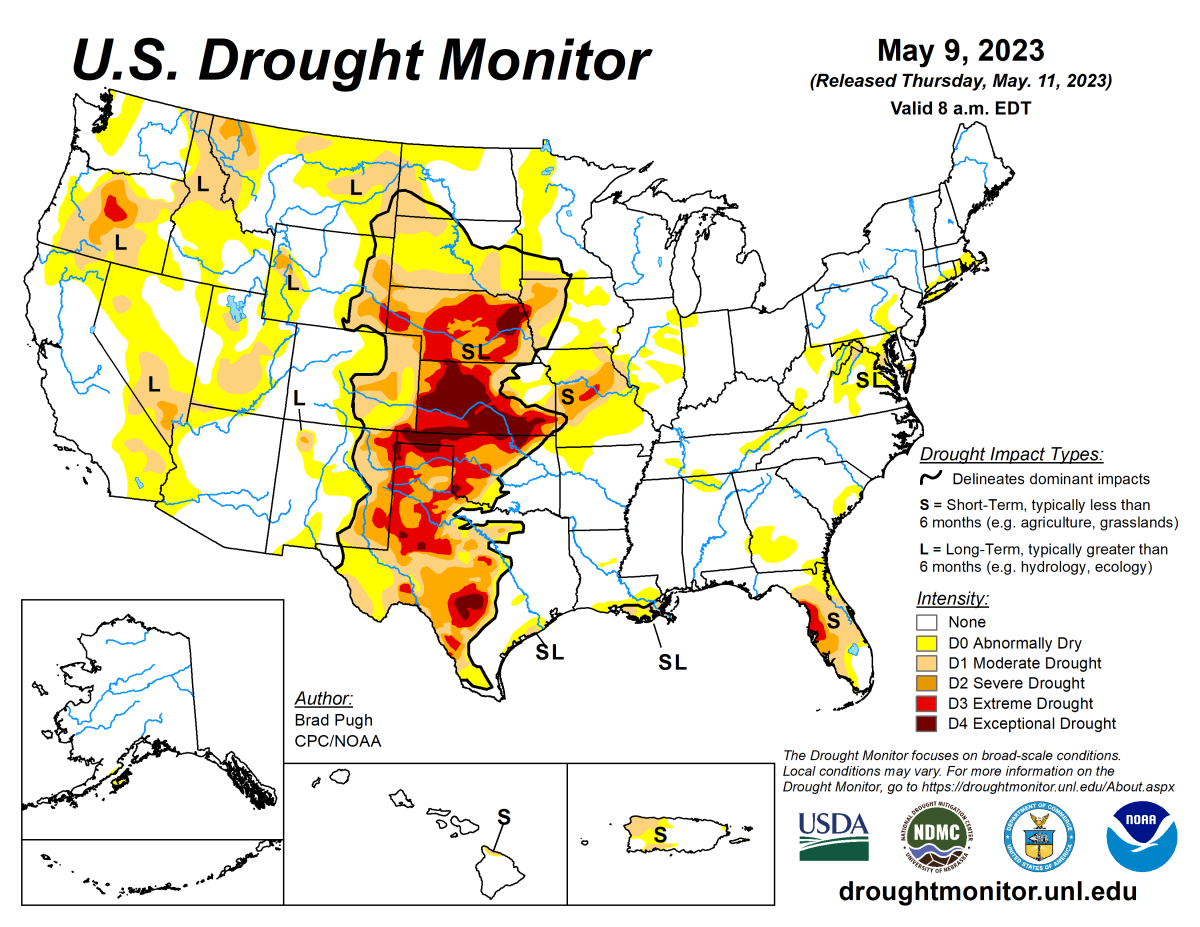
According to the May 9, 2023 U.S. Drought Monitor, moderate to exceptional drought covers 19.7% of the United States including Puerto Rico, a decrease from last week’s 20.4%. The worst drought categories (extreme to exceptional drought) decreased from 5.1% last week to 4.9%.
This U.S. Drought Monitor (USDM) week (May 3-9) began with two very strong and large low-pressure troughs in the upper-level circulation—one over the Northeast and another centered along the West Coast—with a high-pressure ridge in between stretching from the northern Rockies to Texas.
As the week progressed, the eastern trough moved over the Atlantic and the western trough migrated to the northern Plains and southern Canada and weakened. The ridge survived the assault by the western trough and rebuilt itself over the central contiguous U.S. by the end of the week. The troughs kept temperatures colder than normal across much of the western contiguous U.S. and east of the Mississippi River. The ridge was associated with weekly temperatures that averaged warmer than normal from the Rockies to the Mississippi River.
Cold fronts and surface low pressure systems that were associated with the western trough brought above-normal precipitation to areas from California to the northern Rockies. Some of the fronts penetrated the ridge to bring above-normal precipitation to areas in the central and northern Plains, Ohio and Tennessee Valleys, and Great Lakes to central Appalachians. Gulf of Mexico moisture fed showers and thunderstorms that soaked parts of the Lower Mississippi Valley and southern Plains. Otherwise, the Southwest and much of the contiguous U.S. from the Plains to the East Coast had a drier-than-normal week.
Drought or abnormal dryness expanded or intensified across much of Missouri and in parts of the Southeast and central to southern Plains. Drought or abnormal dryness contracted or reduced in intensity across other parts of the Plains and Southeast, and in parts of the West, Midwest, and Northeast.
Nationally, contraction exceeded expansion, with the nationwide moderate to exceptional drought area decreasing this week. Abnormal dryness and drought are currently affecting over 89 million people across the United States including Puerto Rico—about 28.8% of the population.

The full U.S. Drought Monitor weekly update is available from Drought.gov.
In addition to Drought.gov, you can find further information on the current drought as well as on this week’s Drought Monitor update at the National Drought Mitigation Center.
The most recent U.S. Drought Outlook is available from NOAA’s Climate Prediction Center and the U.S. Department of Agriculture provides information about the drought’s influence on crops and livestock.
For additional drought information, follow #DroughtMonitor on Facebook and Twitter.



